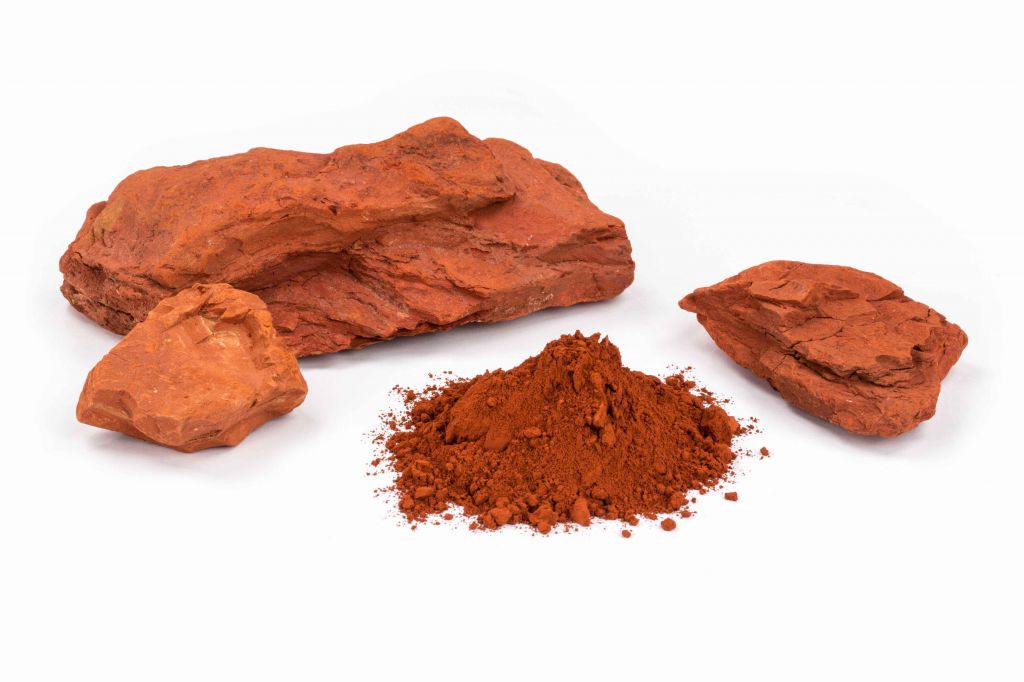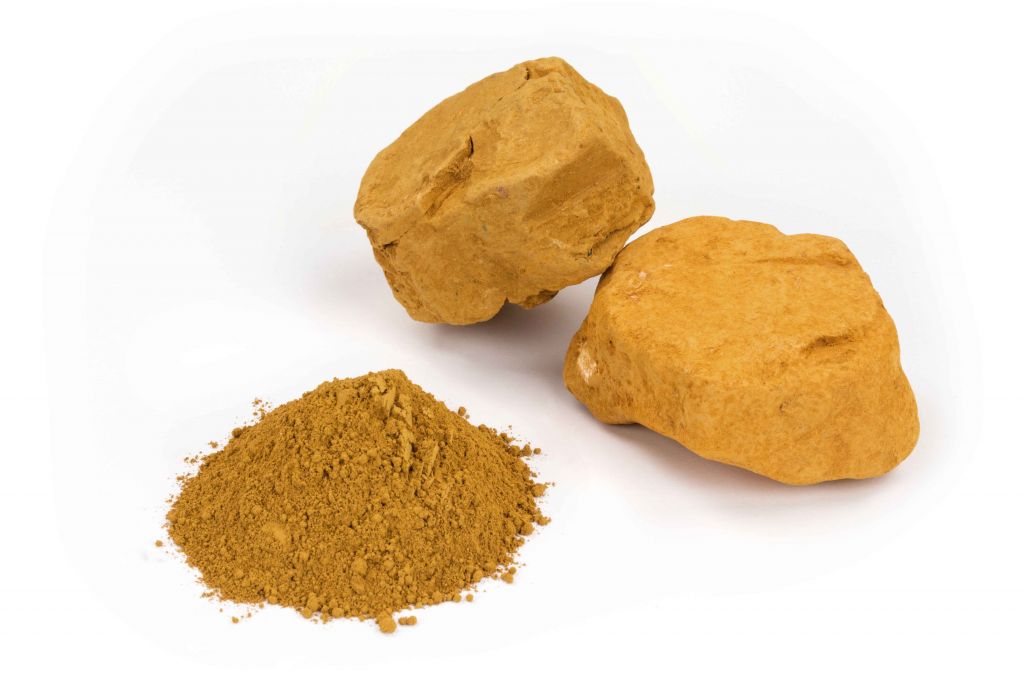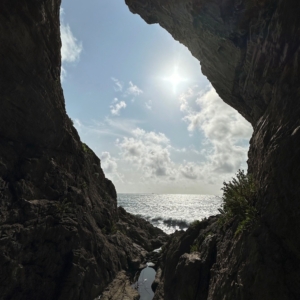
Paviland Cave – The Red Lady’s discovery site
We can imagine that the first real use of color occurred in a rather simple way. At a certain point in prehistory, a man took a handful of wet ochre earth and used it to color his skin and give himself a new appearance, perhaps with the intent of instilling fear or demonstrating a certain social superiority. It is therefore reasonable to assume that even before the more well-known uses in cave paintings to paint the walls of caves, the first role played by color in the history of humanity was precisely that of cosmetics and this practice is in fact present in almost all the most ancient and archaic civilizations.
The oldest traces regarding the use of color date back to the Middle Paleolithic and therefore can be traced back to Neanderthal man and the story of their discovery is very interesting.
In 1908, three French researchers, Jean Bouyssonie, Amédée Bouyssonie and Dandrè Bardon, during their explorations in south-west France discovered the Chapelle-aux-Saints with a skeleton inside that was later dated as being over 50,000 years old. This discovery, in addition to certifying the presence of a funeral rite, also showed the use of red ochre earth that was used to color the head and chest of the deceased. There are also other testimonies of this practice among the Neanderthal race such as The Red Lady, a discovery dating back to 1823 in the Paviland cave in South Wales and many others in more remote places such as Japan and North America.
The First Wall Decorations
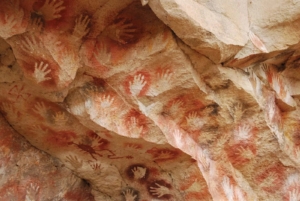
Rock Paintings with Red Ochre and Black
The oldest known rock art is probably that of the Gargas Caves where the famous “handprints” are found, which were made using two simple methods. Some were obtained by simply smearing the palm with ochre powder and pressing the palm on the rock walls, while others were made by placing the hand on the wall and then blowing the powder around it. The main color is red ochre, but you can also see many black prints that were made using natural manganese dioxide instead. Although those of Gargas are the oldest, there are many other examples of caves with the presence of rock paintings of this kind, such as the Cabarets caves in Perigord in France and those in the Cuevas Del Castillo and d’Altamira in Spain.
To find the first advanced decorations we must go to what is known as the Cave of Wonders, namely the Cave of Peche-Merle where you can find the painting of two large horses where the red ochre is used this time with a more complex technique.
Following the order of these discoveries we can say that the red ochres were the first true color of man, immediately followed by the black obtained from coal and soot and only later did the first brown and yellow ochres appear.
The Transition to Polychromy
With the progress of the sign and the first attempts at a modeled design, the use of color also evolves. In cave paintings, archaeologist Joseph Déchelette identifies about 15 types of different pigments used, starting from the aforementioned red ochres of which there are many variations, yellow ochres and blacks up to the first whites of calcareous origin.
The Lascaux Caves, which the French define as the Sistine Chapel of prehistory, are the perfect example of the evolution of decorative art that occurred during the Paleolithic, where it is easy to notice a significant progress in the forms and use of color. Another famous example of this complex art form is that of the Altimara caves where among the many cave representations there is what is known as the “hall of paintings” which presents a vault covered with figures representing various animals such as deer, wild boars and horses.
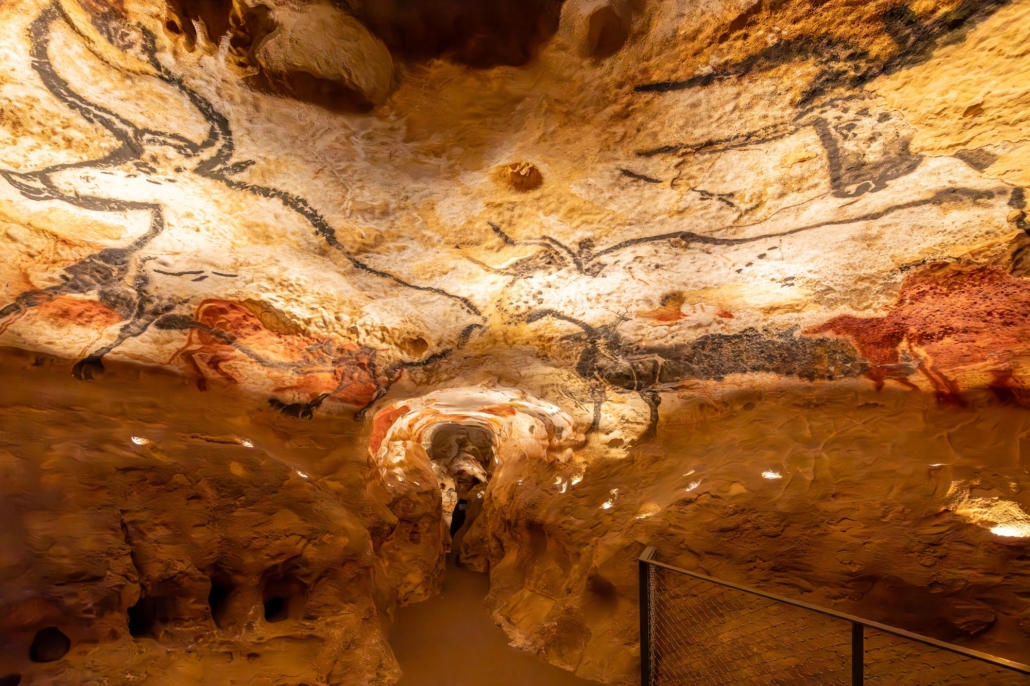
The Lascaux Caves – The Sistine Chapel of Prehistory
In Italy, examples of cave paintings are rather scarce and the most noteworthy are the Romanelli Caves in Puglia, where it is possible to notice the use of red ochre in some cave paintings with simple shapes, a discovery considered important also as evidence of the presence of cavemen in those areas during the Paleolithic.
So over time, decorative art and the use of color began to assume more and more importance in the social structure and consequently the use of natural pigments became more and more refined helping to develop a sense of art within a primitive society where survival was the first absolute value thus helping the passage of primitive man towards perhaps more complex and organized coexistence. Even if for a further evolution linked to color, with the search for colder colors such as green and blue, it will be necessary to wait for the arrival of the Egyptian civilization while for tens of thousands of years man will only use the chromatic range of known warm colors.
The Natural Pigments of Prehistory
Here we see the summary of the natural earths that we can define as prehistoric, that is, of those natural pigments whose use in the Paleolithic, as we have seen, has been certified by numerous studies and research.
The Binders of Prehistory
Identifying with certainty which binders were used during prehistory to make the colored pigments adhere to the rock is not possible, the fossilization process has made any attempt at identification useless and therefore we can only make hypotheses. The options available to prehistoric man are those provided by nature and which have been used as binders by almost all civilizations in history: fats, animal glues, eggs, honey, waxes and blood are among the most likely because they are immediately available and because no treatment is necessary for their use. Probably the answer is not univocal and these natural binders were all used based on the historical period and availability in the various geographical areas.
What is certain is that all these findings are further confirmation of the power of the materials provided by nature in their primordial state. The dating of some of these paintings demonstrate the ability to survive time and eras like no industrially produced material would be able to do, because the need to harmonize with the environment is a fundamental requirement if you want to create an art that lasts over time. For this reason, in addition to the very strong historical-cultural value of prehistoric discoveries that allow us to better understand the historical chronology of man, cave paintings are also a lesson in how the simplest art is the most enduring.
For those who would like to delve deeper into these topics, we recommend reading the beautiful book by Luciano Colombo “I Colori Degli Antichi” – Nardini Editore (1995)


